Shawn Day, Object Detection Marketing Manager, Balluff Inc.
Conventional inductive proximity sensors have a hard time surviving the hostilities of today’s high-throughput weld cells. Yet proximity sensors are indispensable for detecting part presence, part nesting, clamp status, and feature confirmation to ensure that exacting zero-defect quality standards are achieved. When high levels of proximity failure lead to excessive downtime and lost production, the financial viability of the welding operation is threatened.
Consider this real-world example from a tier supplier to the automotive industry running seven days per week:
Sensor failure rate
- 1 failure every other day
- 15 failures per month
- 45 failures per quarter
- 180 failures per year
Replacement time
- 5 minutes per failure
Cost of lost production (downtime)
- $417 per minute
Total cost of sensor failure (5 min per failure x 45 failures per quarter x $417 per min)
- $93,825 per quarter
- $375,300 per year
This is a costly example, but this is commonplace in almost every automated welding plant in operation today. Allowing five minutes to replace a sensor is being generous. In reality, it may take 30 minutes to identify the problem, get a replacement part from the crib, make the repair, verify the fix, and resume full production.
Sensors in welding cells are subject to failure because, although they are intended to be non-contact devices, they tend to be located directly in the middle of the welding process. Conditions such as damage by direct mechanical impact, erosion by hot welding slag, false tripping by accumulated slag, and high intermittent heat cause conventional sensors to fail at an excessive rate.
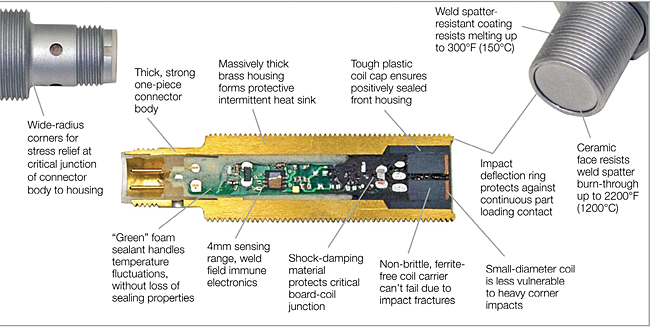
Anatomy of a self-bunkering proximity sensor.
Properly bunkering and protecting sensors will prolong their service life and reduce downtime. Ideally, this strategy is implemented during the design and construction of the weld cell by the equipment builder in response to buyer demands for increased process reliability. But what about currently existing production equipment that originally was built to a lower standard that is plagued with issues? It can be very difficult for a plant to find the time and personnel resources to go back and address problematic applications with better sensor mounting solutions. The job of retrofitting an entire weld cell with proper sensor protection can take two experienced people up to eight hours or more.
The self-bunkering proximity is a new kind of rugged welding sensor concept. A self-bunkering proximity is a sensor with a super-robust housing and other rugged features designed to protect the sensor from physical damage in the application— recessed sensing coil, impact deflection ring, ceramic sensing face, and weld field immune electronics. Such a sensor can combat sensor failure, eliminating unnecessary sensor changes.
Over time, the cost of replacing standard sensors, machine downtime, loss of production, scrap, and maintenance labor cost will far exceed the initial expense of a self-bunkering proximity sensor. While the majority of inductive proximity sensors work well for general purpose applications, self-bunkering sensors allow highly reliable sensing performance in applications where conventional sensors fall short.
Balluff Inc.
www.balluff.com
Filed Under: Sensors (proximity), SENSORS, MORE INDUSTRIES

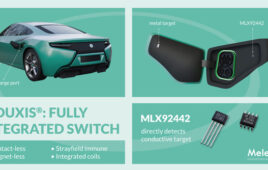
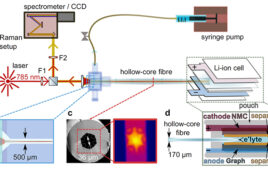
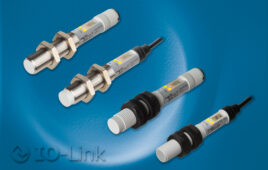
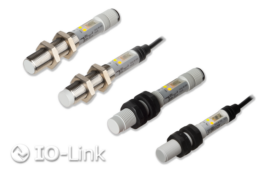
Tell Us What You Think!